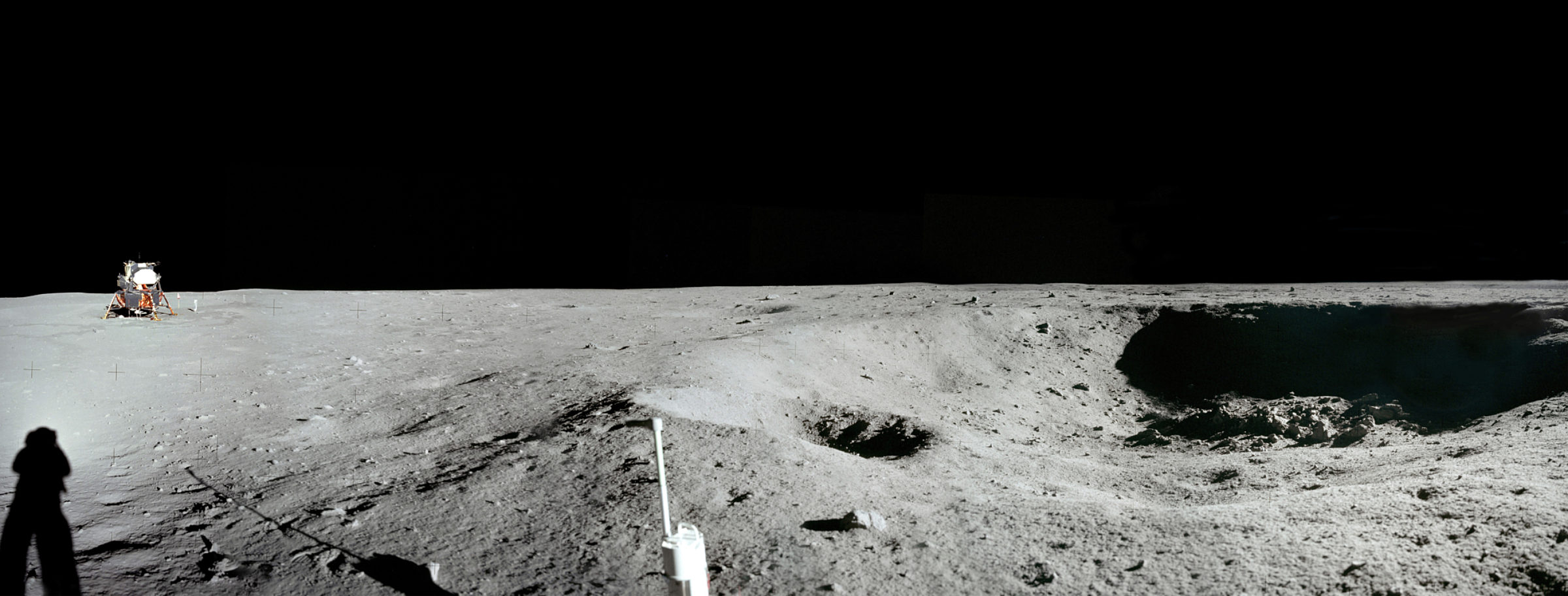Apollo 11 Little West Crater Panorama

Apollo 11's landing on 20 July 1969 was the day humans first set foot on another world. For the risky, challenging endeavor, NASA sought a smooth landing site, one lacking craters or mountains. Following years of survey by lunar orbiters, NASA selected Mare Tranquillitatis for Apollo 11, as it was a flat plain of basalt with few topographic features. Ironically, during descent, Mission Commander Neil Armstrong had to take semiautomatic control of the lunar module to avoid a large boulder field and the 30-meter-wide Little West Crater, landing with only 25 seconds’ worth of fuel remaining.
Capturing this panorama was not part of the originally scripted mission plan. Armstrong took time out of the scheduled activities to venture 60 meters east of the lunar module to Little West, the hazard he had to avoid during the landing. It was the largest feature Armstrong could see from the landing site. The white object in the foreground is the handle of the Apollo Lunar Surface Close-up Camera, a device that allowed the crew to take close-up photographs of the lunar surface.
In 2005, upon seeing this panoramic assembly, Armstrong told me that it didn’t look nearly as big as it had when he was there and that visiting the crater had been a “worthwhile deviation.” Read more of my conversation with Armstrong.

We’re celebrating each Apollo mission’s 50th launch anniversary with a brand new online resource page. Visit planetary.org/apollo for photos, maps, timelines, videos, and more.
Support our core enterprises
Your support powers our mission to explore worlds, find life, and defend Earth. You make all the difference when you make a gift. Give today!
DonateThe Planetary Report • June Solstice
Help advance space science and exploration! Become a member of The Planetary Society and you'll receive the full PDF and print versions of The Planetary Report.


 Explore Worlds
Explore Worlds Find Life
Find Life Defend Earth
Defend Earth


